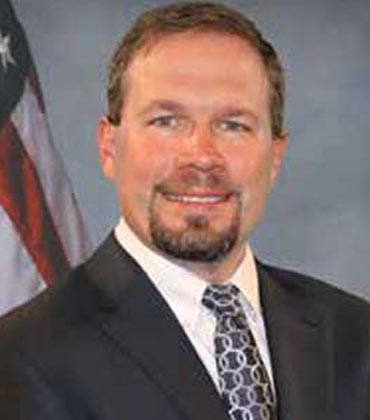THANK YOU FOR SUBSCRIBING
Most companies work to solve problems, but Leidos has always aimed higher—transforming how we perceive and tackle the world’s toughest challenges. It all began in 1969 when Dr. J. Robert Beyster founded the company with the simple yet audacious idea of using science to drive meaningful change on a global scale. Back then, it was known as Science Applications International Corporation (SAIC), and even in its early days, the company stood out. Leidos wasn’t just taking on projects but stepping into uncharted territory. From advancing nuclear energy research to safeguarding national security, its work was groundbreaking. These early achievements laid the foundation for a company built to embrace complexity, turning it into opportunities for innovation and impact. Five decades later, Leidos continues to be a global innovation leader. Whether defending against sophisticated cyber threats, revolutionizing public health infrastructure or driving digital transformation, Leidos demonstrates an ability to ask penetrating questions and develop solutions that create substantive, systemic change. Turning Challenges into Opportunities The challenges facing governments and organizations today are unprecedented. Securing critical networks against sophisticated cyber threats, modernizing legacy digital infrastructure and addressing complex, interconnected problems demand more than traditional solutions. These multifaceted challenges emerge simultaneously, creating a complex landscape that requires innovative, resilient and rapid responses. Leidos distinguishes by delivering transformative outcomes that fundamentally redefine technological potential. At the core of their approach lies a critical foundation—trust. Artificial intelligence is a powerful tool for governments, offering unprecedented data analysis and decision-making capabilities. However, longstanding skepticism has hindered its adoption. Leidos confronts this challenge directly by developing AI and machine learning systems designed to be inherently transparent and unbiased. Their approach transforms AI from a questionable technology into a reliable strategic asset. These systems enable public agencies to address critical challenges more effectively. By eliminating potential biases and ensuring transparent operations, Leidos helps organizations leverage data-driven insights across domains—from managing public health crises to enhancing national security operations. The stakes in cybersecurity reach new heights. Cyber threats continue to evolve with increasing sophistication, targeting the very foundations of national infrastructure. While many agencies remain trapped in reactive defense strategies, Leidos’s pioneering approach shifts the paradigm. Their AI-driven cyber frameworks enable proactive anticipation and prevention of potential breaches. Advanced strategies like Zero Trust architecture and quantum cryptography further reinforce this approach. Leidos helps governments develop robust, adaptive cyber resilience that can withstand increasingly complex threat landscapes by moving beyond traditional defensive postures.
When disasters hit people differently, why should emergency management take a one-size-fits-all approach? This question inspired Patrick Meyers to rethink the conventional model for disaster management, ultimately leading to the establishment of Meyers Emergency Management (MEM). The company’s philosophy centers on personalized consulting services and tailored solutions, essential for navigating the preparation, mitigation, and recovery phases of emergencies. Meyers Emergency Management recognizes a common pitfall in the industry: the over-reliance on predefined frameworks. These static models often fail to address the unique complexities of each client’s circumstances. In contrast, Meyers Emergency Management excels through its commitment to adaptability and customization. The company begins by conducting a comprehensive assessment of a client’s current emergency preparedness measures, response capabilities, resources, and any specific challenges or limitations they may face. By thoroughly understanding each client’s starting point, Meyers Emergency Management bridges the gap between their present state and their desired outcomes. This meticulous approach ensures that the solutions provided are not only effective but also sustainable and practical for the client’s unique context. “We live and breathe disaster science, staying at the forefront of current methodologies and ensuring everything remains up-to-date,” says Meyers. MEM upholds this commitment by streamlining its offerings to focus exclusively on products and services that meet the highest global standards, avoiding the inefficiencies of tiered pricing models. For example, MEM was the first company worldwide to enroll in the Emergency Management Accreditation Program (EMAP) Business Consultant Initiative (BCI).

DeWayne Rose, Director of Emergency Management, City of West Memphis

Stephen Willoughby, Director for Emergency Communications, Preparedness & Response, City of Richmond

Craig Poley, Chief Information Officer, the City of Arvada

Roy Bené, Chief Infrastructure and Security Officer, the City of Irving

Joe Moudy, Director of Emergency Management, the City of Lubbock

Steve Monaghan, Agency Director, Information & General Services, Nevada County, CA

Margaret Brisbane, CIO/Department Director of Miami-Dade County
Climate change, cybersecurity threats, and urbanization present significant challenges for emergency management, requiring innovative solutions like real-time data use and stakeholder collaboration.
Technological innovations like AI, drones, IoT, and mobile apps enhance emergency response, efficiency, and saving lives.
Advancing Crisis Response with Cutting-Edge Technology
Technological advancements are restructuring emergency management, enhancing response efficiency and disaster preparedness. Leading providers are integrating AI-driven analytics, cloud-based solutions and UAV technology to ensure emergency teams can adapt and act swiftly in crisis situations. The global emergency management services market is projected to grow from USD 181.96 billion in 2024 to USD 210.02 billion in 2025, at a CAGR of 15.4 percent. A slew of advancements in technology fuels this growth. 5G connectivity, AI, and cloud computing enable real-time data transmission, predictive analytics and scalable storage. They improve situational awareness, allowing emergency teams to make data-driven decisions and deploy resources with greater speed and accuracy. Drones and UAVs are transforming disaster response by providing rapid aerial assessments, aiding search and rescue efforts, and delivering essential supplies. Their ability to access remote and hazardous locations accelerates emergency response. AI and machine learning analyzes vast datasets to predict disasters and assess risks. AI-driven chatbots facilitate real-time communication, ensuring the public receives critical guidance during emergencies. This edition of Govt CIO Outlook explores the latest in emergency management technologies, providing insights into how organizations can leverage these advancements to enhance crisis response, improve coordination and strengthen disaster resilience. It features thought leadership articles from experts like Craig Poley, chief information officer at City of Arvada, who stresses integrating cybersecurity into disaster recovery to protect cities from evolving threats. He advocates proactive strategies and cross-functional collaboration to strengthen urban resilience. Roy Bené, chief infrastructure and security officer at City of Irving, also stresses a balanced AI adoption, prioritizing security, ethics and risk management. He advocates proactive cybersecurity, ongoing awareness training and strong leadership to navigate technological change. We hope this edition featuring Top Emergency Management Services Providers 2025 provides valuable insights that will help your organization adopt the right technologies to enhance emergency response, improve resilience and safeguard communities.